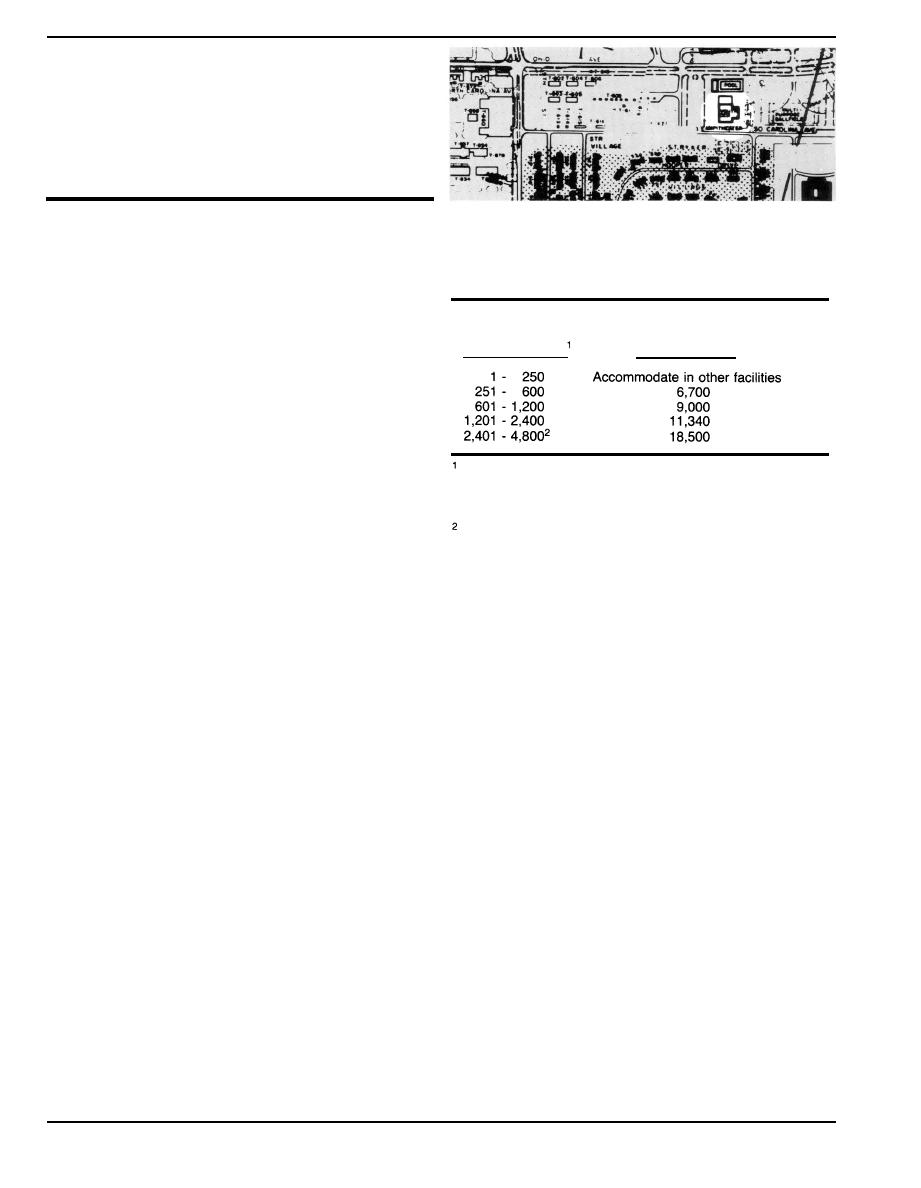
Chapter 7
7 - 33
Youth Centers
DG 1110-3-138
The youth activities program performs a morale support
Table 7 - 100 DOD Space Authorization for Youth
function by providing a comprehensive system of activi-
Centers
ties designed to meet the social, cultural, and recrea-
Youth Population
Area (Gross SF)
tional needs of children and young military dependents;
to encourage their constructive use of leisure-time; to
develop their leadership abilities and self-reliance; and to
develop traits of responsible citizens. This important ser-
vice is not otherwise available on the installation, and is
typically inadequately served by activity programs (e.g.,
city and county recreation programs, Y's, community
schools, etc.) in surrounding civilian communities.
Youth population shall be established by determining the
school enrollment of active duty military and authorized
The youth activities program serves military dependents
civilian employee dependent youth ages 6 to 19 in local
6 through 19 years of age. The program should provide
school districts, on or off post.
for the full range of users whose composition, subgroup-
For each incre ment of 2,400 eligible dependent youth
ings, and interests, will vary from post to post. The activ-
population above 4,800, an additional 9,240 square feet may
be provided.
ities offered at each installation will vary depending on
local preferences, geographic and climatic conditions,
available staff and facilities, and other local
considerations.
The basic decision involved in the planning of youth
activities facilities is whether the installation should have
a centralized or a decentralized system. A centralized
system would have one main youth center serving the
entire post. A decentralized system would have a set of
youth centers, with one main center serving the entire
post for the activities that warrent a central location, and
neighborhood centers located to serve geographical sub-
groups of the post population. Other factors to be con-
sidered in youth activities planning include: general
installation layout, location of existing buildings and sport
fields, availability of building sites, geographic barriers,
needs of user population, and distribution of off-post
youth population.
The major functional areas of youth centers include a
drop-in module, programmed space module, large space
module, administration and support module, and outdoor
module.
Page 7-88 DG 1110-3-142


 Previous Page
Previous Page
